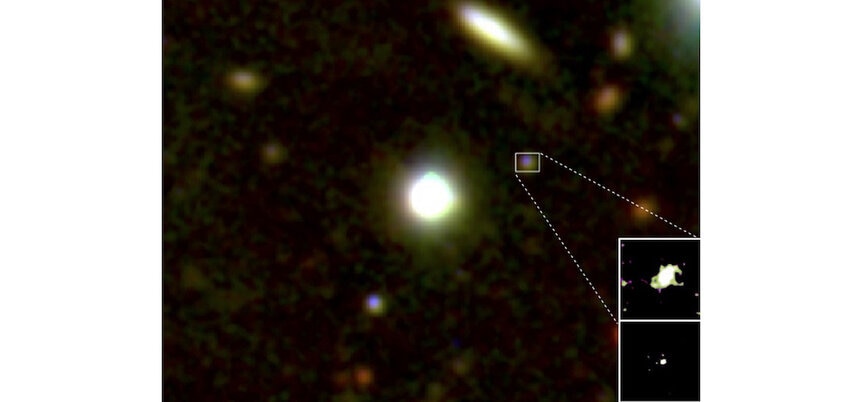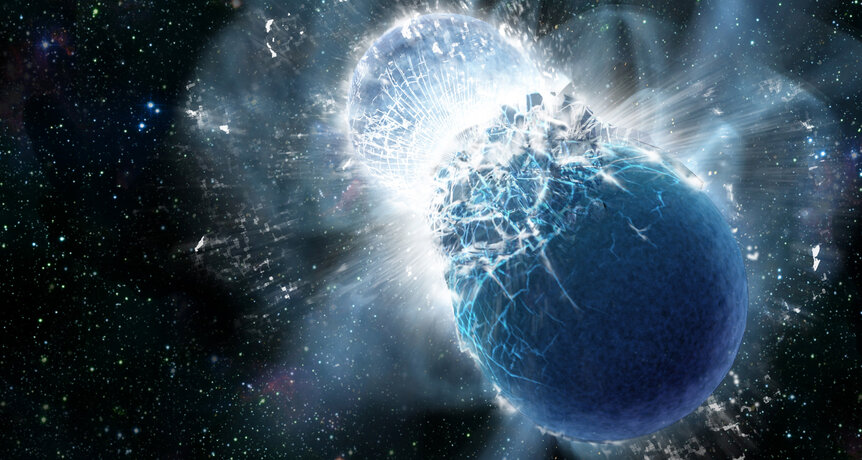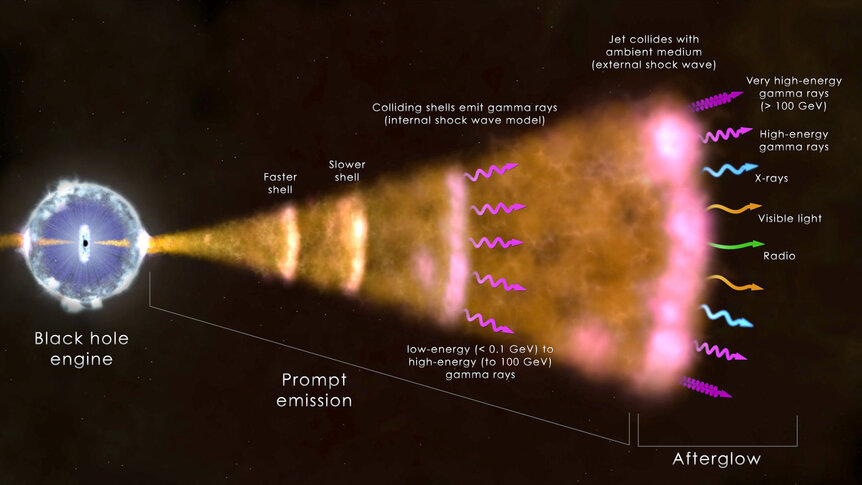Create a free profile to get unlimited access to exclusive videos, sweepstakes, and more!
One of the Universe’s most powerful explosions tried to disguise itself
Terrifying gamma-ray burst looked like a different kind of terrifying gamma-ray burst.

Gamma-ray bursts, or GRBs, are pretty much the ultimate explosions: Catastrophic releases of energy that can be many, many billions of times brighter than the Sun. They explode with such power that we can see some clear across the observable Universe!
They can be separated into two categories: short GRBs, which last from a few milliseconds to a few seconds, and long GRBs, which can be several minutes in duration. Over the years we’ve learned that short GRBs are caused when two superdense neutron stars collide and collapse into a black hole, sending out a huge but extremely brief pulse of high-energy radiation. A long GRB occurs when, at the end of its life, a massive star’s core collapses and forms a black hole; under some conditions the collapse launches out a pair of death rays, mind-crushing beams of energy that blast their way out of the star and create the high-energy gamma rays we see. Not long later the star itself explodes, creating a supernova.
There’s a joke among GRB researchers: If you’ve seen one GRB, you’ve seen one GRB. They’re all so different that it can be hard to categorize them and understand the details of the explosion. But, generally speaking, the division between long and short ones is pretty good.
Or it was, until Aug. 26, 2020. On that day NASA’s orbiting Fermi gamma-ray observatory detected a GRB that lasted about a half a second. So it’s a short one, right? Yeah, not so fast — literally. While it was short in duration, every other characteristic about it indicated it was a long GRB!
It’s designated GRB 200826A, and it happened in a galaxy well over six billion light-years from our own: halfway across the observable Universe. The gamma-ray detectors on Fermi showed that it lasted less than a second in the frame of the galaxy*. An automatic alert was sent out, and other telescopes swung into action, observing the blast. And right away they started finding weird stuff about it [link to paper].
When neutron stars collide and make a short GRB, the gamma rays are very high energy — what we call hard gamma rays. This one sent out gamma rays but they were lower energy, softer, than usual for a short burst, more like what’s expected from a long burst. Most short GRBs fade very rapidly, but over time astronomers measured the light coming from GRB 200826A and saw the light fading much more like a long burst, and in fact saw a bump in the emission, an increase in the emitted light, about 12 days after the explosion, again much more like a supernova event than a neutron star merger.
So what gives?
The intensity of a gamma-ray burst comes from the formation of the jet of matter and energy blasted out from the formation of the black hole. If this happens inside a collapsing stellar core, the jets have to fight against the inrushing matter, which can have a mass of several octillion tons. So, a lot. In many cases there is such an overwhelming amount of power tied up in the beams that they can punch their way out and create the long GRB.
What the astronomers think happened in this case is that the scales tipped more in favor of the collapsing core. It quenched the jets by so much that by the time they ate their way out there was hardly any oomph left in them, and they kinda squeaked instead of roared, lasting for a fraction of their usual duration.
If this is true, and it really looks like it is, then it’s likely some fraction of GRBs classified as short are actually long ones, just masquerading as short ones. In this case, despite being 6.6 billion light-years from us, GRB 200826A is actually considered rather close; most are much farther away, so they’re even fainter and harder to study. That makes knowing just how many are in disguise tougher. They don’t last very long, so getting really deep, repeated observations is difficult.
But this all rather fits the general GRB attitude of being a pain to understand. It took decades to even get a basic understanding of what they were — that’s a great story and you should watch this video I made about it — and even now they pose more riddles than answers. Finding they’re even more complicated and jerky isn’t surprising at all.
But they’re fascinating and terrifying events, well worth the study. Many thousands of them have been observed since the first was seen in 1967, and honestly the fact that we still have an incomplete understanding of them, sometimes on a basic level, is exciting. It means there’s a lot more to understand about them, and that’s one of the most fun aspects of science.
* The Universe is expanding, so to us a galaxy over six billion light-years away is receding from us so rapidly that relativistic effects come into play; we see time flowing more slowly in that galaxy. The GRB actually lasted about 2 seconds as seen by us, but accounting for relativity it actually lasted less than 1 second in the frame of reference of the GRB host galaxy.





























